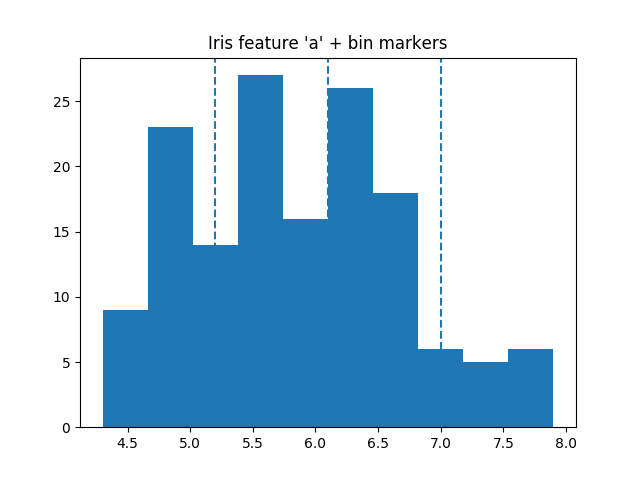Binning transformer¶
Demonstrates how to bin continuous features in your dataset.

Out:
a ... b_binned
0 5.1 ... (3.30, 3.90]
1 4.9 ... (2.70, 3.30]
2 4.7 ... (2.70, 3.30]
3 4.6 ... (2.70, 3.30]
4 5.0 ... (3.30, 3.90]
[5 rows x 6 columns]
print(__doc__)
# Author: Taylor Smith <taylor.smith@alkaline-ml.com>
from matplotlib import pyplot as plt
from skoot.datasets import load_iris_df
from skoot.preprocessing import BinningTransformer
# #############################################################################
# load data
iris = load_iris_df(include_tgt=False, names=["a", "b", "c", "d"])
binner = BinningTransformer(cols=["a", "b"], return_bin_label=True,
strategy="uniform", overwrite=False,
n_bins=4)
# print the head of the binned dataset
print(binner.fit_transform(iris).head())
# #############################################################################
# Show where the boundaries reside
a_lower = binner.bins_["a"].lower_bounds[1:] # skip the -np.inf
plt.hist(iris["a"].values)
# plot vertical lines where bins are
for bound in a_lower:
plt.axvline(bound, ls="--")
plt.title("Iris feature 'a' + bin markers")
plt.show()
Total running time of the script: ( 0 minutes 0.059 seconds)